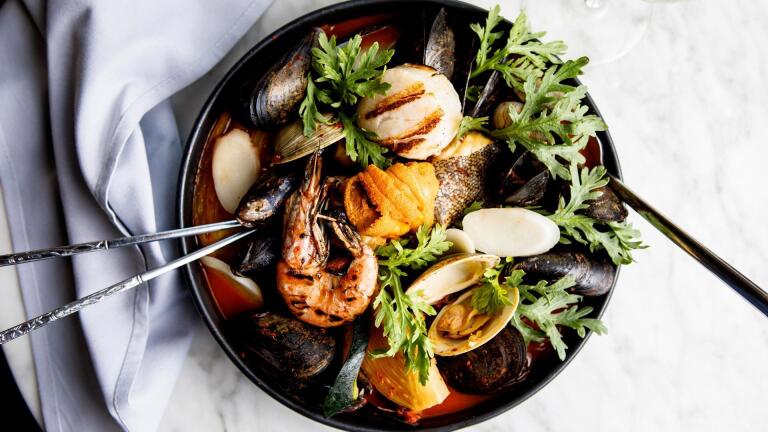Back to Show
The Migrant Kitchen
Why Sake Brewers Got Into the Industry
When Jake Myrick and Noriko Kamei decided to start their own sake brewery in the United States, they wanted to make sure they retained the Japanese craftsmanship that characterizes the process making of namazake, or unpasteurized sake. Initial reactions to their venture were mixed, at best.
Support Provided By
Season

26:47
Brooklyn chefs Jenny Kwak and Sohui Kim carry on traditions of female-driven Korean food.

26:47
Chefs Chris Williams and Jonny Rhodes uplift African American foodways in Houston, Texas.

26:47
Puerto Rican chef José Enrique creates opportunities for a more self-sufficient island.

26:50
Chef Bonnie Morales celebrates her Russian roots, as well as the Pacific Northwest bounty.

26:48
In San Gabriel Valley, chef Jon Yao marries Taiwanese traditions with unique ingredients.

26:29
Jazz Singsanong of Jitlada Thai and Louis Tikaram of E.P. & L.P. transport the palate around the world with the complex flavors of Thai cuisine.

26:40
With the rapid gentrification of the neighborhood, the face of the country’s oldest Chinatown is changing while a younger generation holds on to the traditions and flavors of the past.

26:38
Rooted in the traditions of Japanese sake brewing, Sequoia Sake works to resurrect an heirloom rice in California and pioneer the young but growing craft sake movement in the U.S.

26:40
The Jewish Delis of Los Angeles serve an important role for connecting heritage to food. Discover the delis that make up the fabric of Los Angeles life.

26:40
Cassia in Santa Monica, Good Girl Dinette in Highland Park, Red Boat Fish Sauce, and Minh Phan of Porridge & Puffs are hoping to demonstrate that there’s so much more to Vietnamese culture than banh mi, spring rolls and pho.














